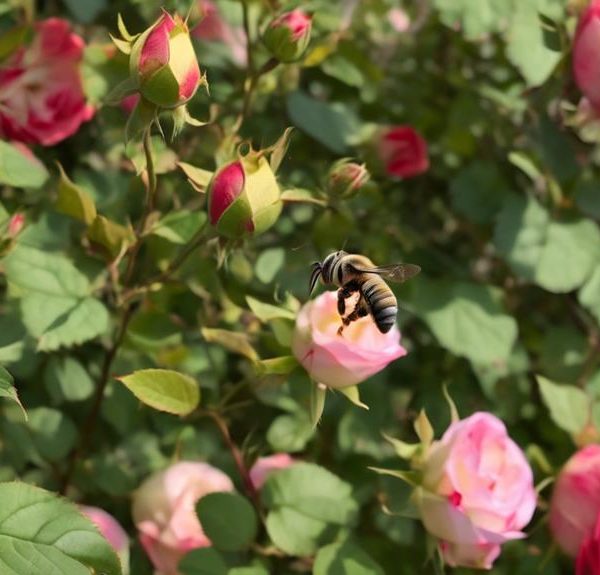Heighten your understanding of the intriguing leaf cutter bees and their surprisingly significant size in our vast natural world.
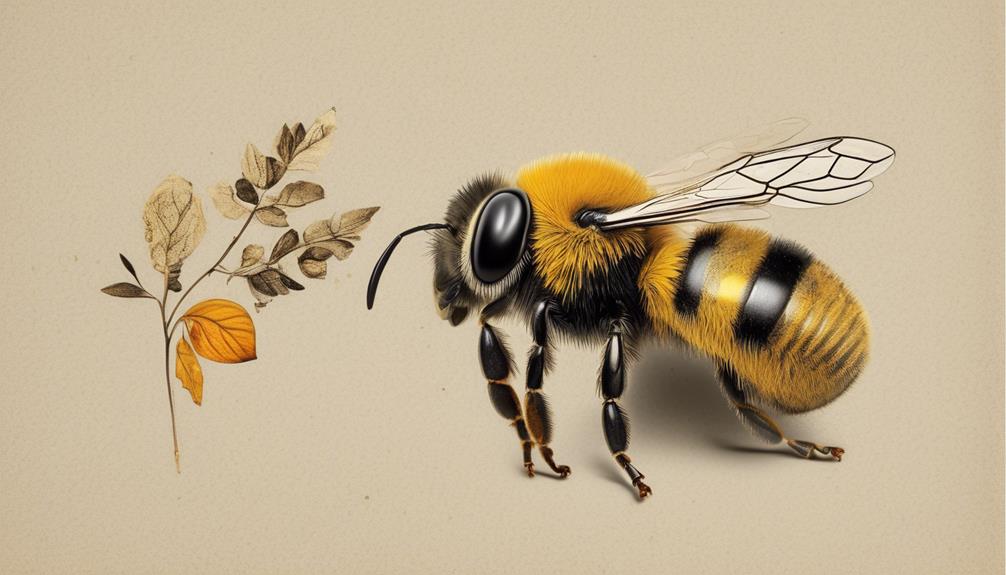
How Big Are Leaf Cutter Bees
In the hustle and bustle of the modern world, it's easy to overlook the smaller, inconspicuous creatures around us, such as the leaf cutter bee. You might be surprised to learn that the size of these industrious insects is actually a hot topic among scientists and researchers.
Leaf cutter bees are fascinating creatures, varying in size and showcasing unique behaviours that are intrinsically linked to their dimensions. Let's embark on a journey to discover exactly how big these bees can be, and why their size matters in the grand scheme of things.
Could the size of these diminutive creatures hold secrets about our own world? Stay with me to uncover this intriguing mystery.
Key Takeaways
- Leaf cutter bees come in a range of sizes, with some being smaller than honeybees and others being larger.
- Size differences between leaf cutter bees and other bee species reflect their different roles and behaviors in ecosystems.
- The compact size of leaf cutter bees allows them to access nectar and pollen in complex floral structures and enables precise cutting and carrying of leaf segments for nest building.
- Leaf cutter bees are important pollinators that contribute to habitat biodiversity through their wide variety of plant pollination.
Understanding Leaf Cutter Bees
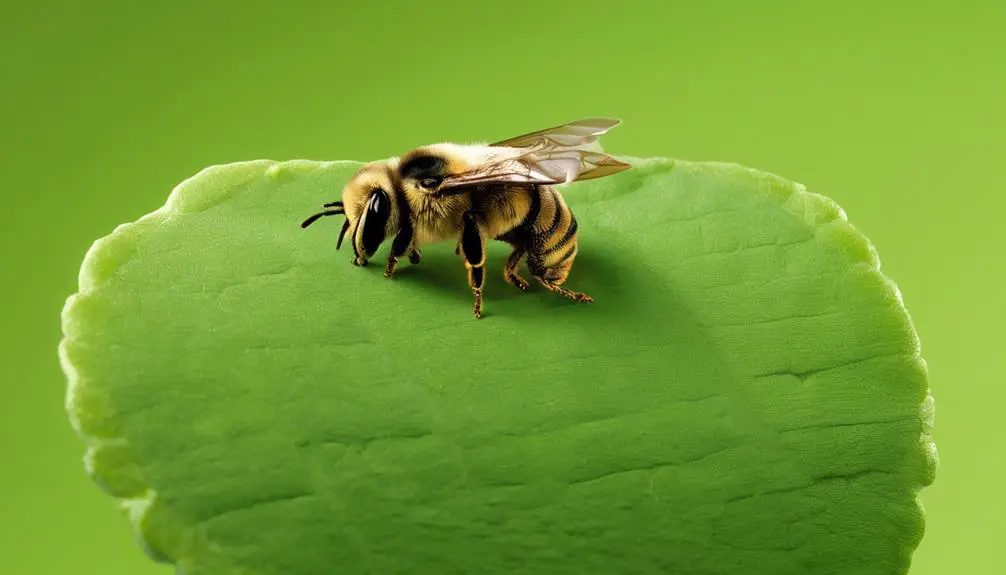
To deeply comprehend leaf cutter bees, it's crucial to delve into their intricate life cycle, unique behaviors, and critical role in the ecosystem. These bees aren't mere honey producers. They're industrious pollinators that significantly contribute to the world's biodiversity.
As you observe these bees, you'll notice the distinct behavior of cutting circular pieces from leaves. They aren't causing harm but collecting materials to create nests. Each nest cell houses a single egg, provisioned with a mixture of nectar and pollen. This ensures that upon hatching, the larvae have enough sustenance to grow and metamorphose into adults.
In terms of their size, they're usually around 6-15 millimeters, with females typically larger than males. It's a fascinating fact that despite their small size, they're vitally important to our ecosystem. As excellent pollinators, they promote plant growth and diversity, thereby supporting different wildlife species.
Through a detailed analysis of their life cycle and behaviors, you gain a newfound appreciation for these tiny powerhouses. Remember, while they may seem insignificant, leaf cutter bees play a colossal role in maintaining ecological balance. As you understand them better, you'll realize their importance can't be overstated.
Measuring the Size of Leaf Cutter Bees
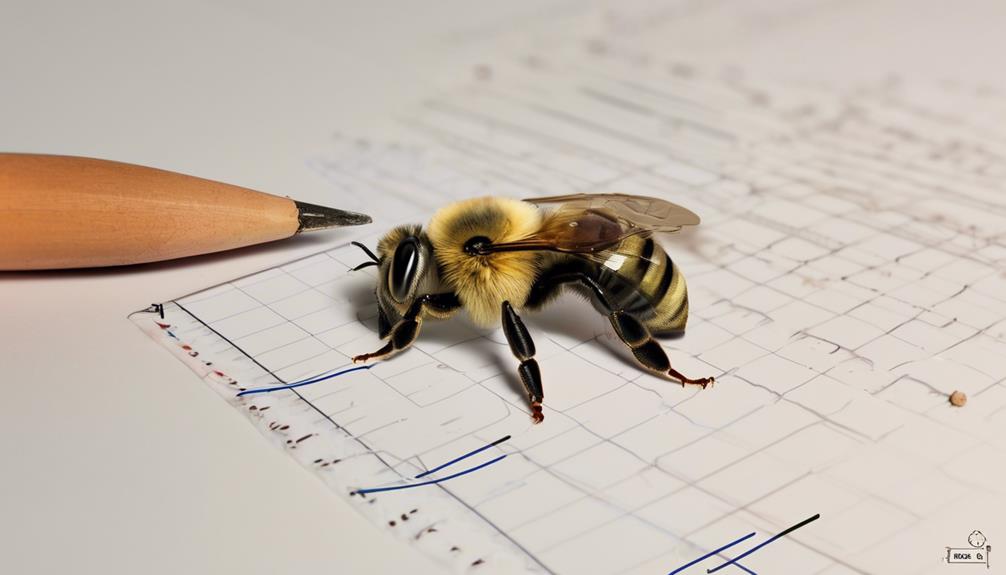
Grasping the full essence of the leaf cutter bees' size involves a detailed examination of their physical attributes, with close attention to specific measurements that set them apart from other bee species. On average, you'll find that leaf cutter bees measure between 5 mm to 17 mm in length. That's quite a range, isn't it? It's important to note that the size can vary significantly based on factors such as species, diet, and environmental conditions.
If you're wondering how these measurements compare to other bees, consider this: a honeybee, for instance, typically measures between 10 mm to 15 mm. So, some leaf cutter bees can be smaller, while others can be of similar size or even larger. It's this variability that makes leaf cutter bees so fascinating to study.
To get a clearer picture, imagine the diameter of a pencil eraser. That's roughly the size of a smaller leaf cutter bee. Now, think of a marble. Some larger leaf cutter bees can be about that size. These comparisons should give you a good grasp of the size range of these industrious insects.
You'll soon realize, in the world of bees, size does matter!
Comparing Leaf Cutter Bees to Other Species
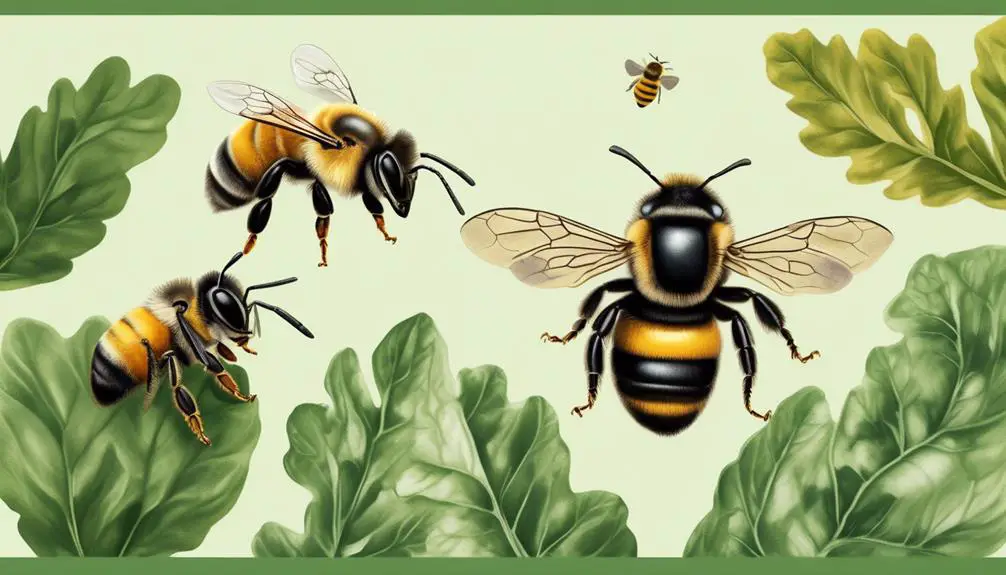
Now that you've got a handle on the size of leaf cutter bees, let's draw some comparisons with other bee species to further understand their unique place within the hive of biodiversity. Comparisons shed light on the diversity within the bee family, giving you a broader perspective.
Consider the following table:
Bee Species | Average Size (mm) | Notable Characteristics |
|---|---|---|
Leaf Cutter | 5 – 17 | Cuts leaf for nest |
Honey Bee | 12 – 15 | Produces honey |
Bumble Bee | 20 – 23 | Large and fuzzy |
Leaf Cutter bees, as you can see, are generally smaller than Honey and Bumble Bees. Importantly, the size difference hints at the differing lifestyles and roles these species play in our ecosystems. The larger Bumble Bees, for instance, are great pollinators due to their size and fuzziness.
Leaf Cutters, although smaller, are just as crucial. Their leaf-cutting behavior is key to their nest building and survival. So, while size is an important variable, remember it's not the only characteristic that defines these fascinating insects. Each species, regardless of size, contributes vitally to biodiversity.
The Importance of Size in Leaf Cutter Bees
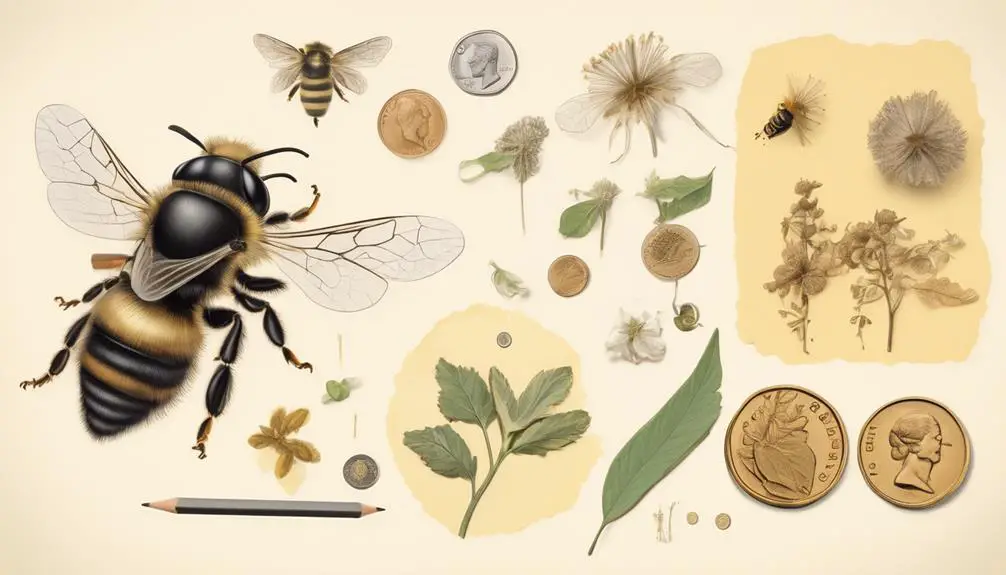
Despite their smaller stature, the size of Leaf Cutter Bees plays a pivotal role in their ecological functions and survival strategies. You see, their compact size allows them to maneuver through complex floral structures, reaching nectar and pollen that larger bees can't access. This means they can visit a wider range of flowers, contributing to greater biodiversity.
Size also matters in their unique leaf-cutting behavior. Their petite bodies enable precise cutting and carrying of leaf segments for nest building. Such delicate operations wouldn't be possible for bigger bees. They're also less conspicuous to predators due to their size, enhancing their survival odds.
Furthermore, their small size affects their thermoregulation. Unlike larger bees, Leaf Cutter Bees can't retain heat as effectively. This makes them more active during warmer parts of the day and more reliant on sunny habitats. This dependence shapes their distribution and influences their role in pollination networks.
All in all, the size of Leaf Cutter Bees isn't a disadvantage; it's an adaptation. It allows them to carry out roles larger bees can't, making them a crucial part of our ecosystem.
Interesting Facts About Leaf Cutter Bees

Beyond their size and leaf-cutting behavior, there's a host of fascinating facts about Leaf Cutter Bees that underscore their unique role in the ecosystem.
Firstly, you might be surprised to learn that these bees are solitary creatures. Unlike honey bees, they don't live in large colonies or have a queen. Each female bee is fertile and constructs her own nest.
These industrious insects are also master builders. They intricately craft their nests out of leaf pieces, hence the name 'Leaf Cutter'. These nests, often built in rotting wood or thick stems, are a marvel of natural engineering.
Moreover, they're critical pollinators. They pollinate a wider variety of plants than most other bees, contributing to the biodiversity of their habitats. They carry pollen on their abdomens, inadvertently transferring it between flowers as they gather leaf pieces.
Finally, their life cycle is fascinating. The female bee stocks the nest with pollen and nectar, then lays an egg on top. The resulting larvae feed on this stockpile, transforming into adult bees within a few weeks.
These facts shed light on the Leaf Cutter Bees' complex behaviors, their pivotal role in ecosystems, and their incredible adaptability.
Conclusion
In conclusion, leaf cutter bees play a crucial role in our ecosystem. They measure typically between 0.2 to 1 inch. Their size, albeit smaller compared to other species, contributes significantly to their survival and role as efficient pollinators.
These fascinating creatures aren't just interesting, they're fundamental. So, next time you see these tiny workers, remember their importance and the remarkable facts you've learned.


